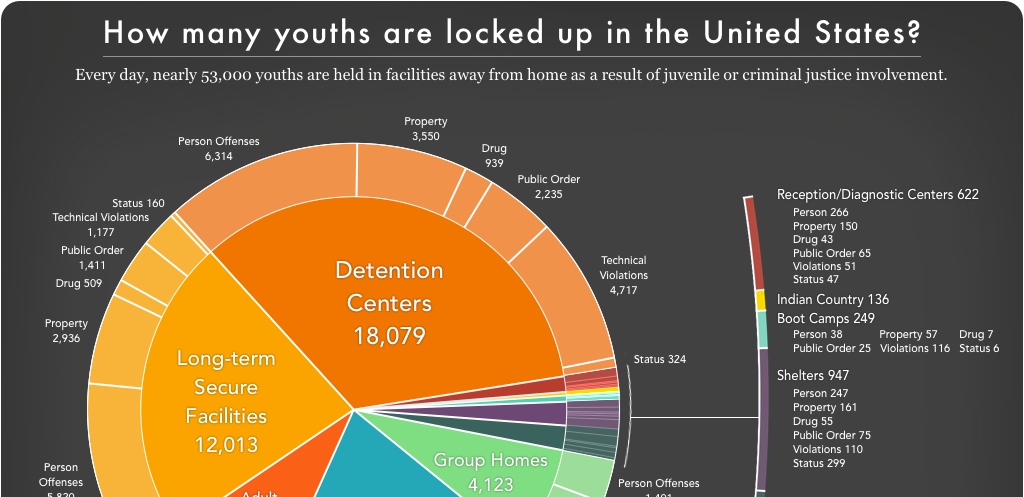New report, Youth Confinement: The Whole Pie, breaks down where youth are locked up in the U.S. and why
In a series of graphics, we explain how tens of thousands of youth who could be better served in their communities still end up in confinement.
February 27, 2018
Easthampton, Mass. – A map of juvenile justice in America would be daunting, covering 1,852 youth facilities of varying restrictiveness, not to mention thousands of youth held in adult prisons and jails. Youth Confinement: The Whole Pie offers a comprehensive view of this system, breaking down where and why justice-involved youth are locked up.
In a series of graphics, the report reveals how tens of thousands of youths who could be better served in their communities still end up in confinement. Far from confining “only those youth who are serious, violent, or chronic offenders,” as the juvenile justice system purports to do, this country:
- Locks up 8,500 youths every day for technical probation violations
- Detains over 9,000 youths before they’re even tried – and holds 900 in long-term secure facilities, essentially prisons, before they’ve been committed
- Locks up over 7,500 youths for other low-level offenses, including status offenses (behaviors for which an adult would not be prosecuted)
Youths held pretrial or for minor offenses comprise 1 in 3 held in confinement today – children and adolescents who could be released at virtually no threat to public safety.
The report explores some of the worst harms of excessive youth confinement, including:
- Disproportionately punishing Black and Native youth, with disparities exceeding even those of the adult justice system
- Confining most youth in facilities indistinguishable from jails and prisons – or in actual adult jails and prisons
- Holding youth in “temporary” reception/diagnostic centers for months or even years
The big-picture view offered by Youth Confinement: The Whole Pie suggests opportunities for immediate reform, such as transferring youth to community-based programs and drastically curtailing pretrial detention. “For advocates working to find alternatives to incarceration,” says report author Wendy Sawyer, “ending youth confinement should be a top priority.”
-30-




